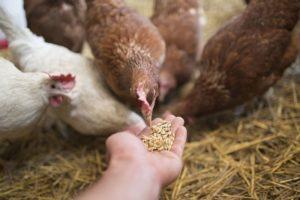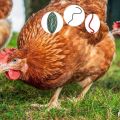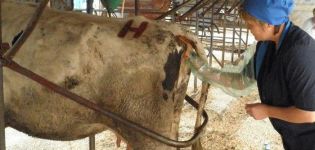The best way to feed chickens in winter and making a normal diet at home
With the arrival of cold weather, many farmers are faced with problems in the selection of feed for their pets. To prevent feathered animals from losing their plumage and losing the ability to lay eggs, you should provide comfortable conditions and carefully select a diet. Therefore, the question arises: how to feed the chickens in winter so that they rush. What matters is not only the quality, but also the quantity of food, as well as the frequency of feeding.
Features of feeding hens in winter
In frosts, it becomes difficult to care for birds due to the following factors:
- lowering the temperature in the hen house;
- decreased mobility of the bird itself;
- the lack of the ability to independently replenish the level of protein foods in the body.
The food norm in winter is 3-4 times a day. When switching to winter food, it is important to follow the rules:
- In the morning, chickens are best fed with warm food.
- In the daytime, you can give compound feed by mixing table salt and chalk into it.
- In the evening, a mixture of different types of grains will be optimal nutrition. The grain should be thoroughly crushed, as the bird does not need to spend energy in swallowing and digesting food. A hearty dinner will help keep you strong and stay warm until morning.
These simple feeding rules will avoid many problems.
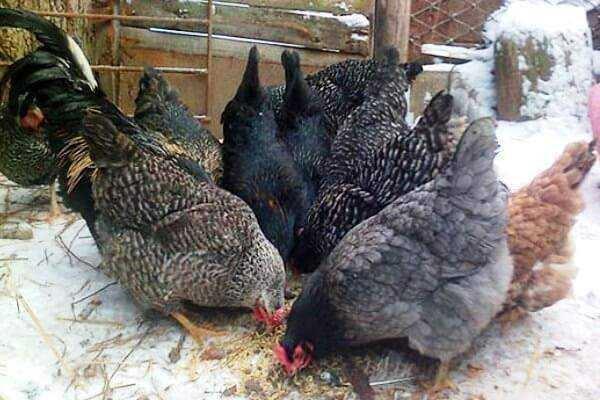
How to feed chickens in winter?
The diet should be complete and varied. It must contain root crops, legumes, grain, greens, compound feed, mineral complexes and a sufficient amount of water..
Legume feed
Since legumes contain protein and healthy amino acids, they must be included in the diet to replenish poultry stocks. You need to give them boiled. For cooking, the beans should be soaked for a couple of hours, and then boiled over low heat. In some cases, the beans are added to the feed as a grain. The chicken that has undergone heat treatment will be able to assimilate without much effort.
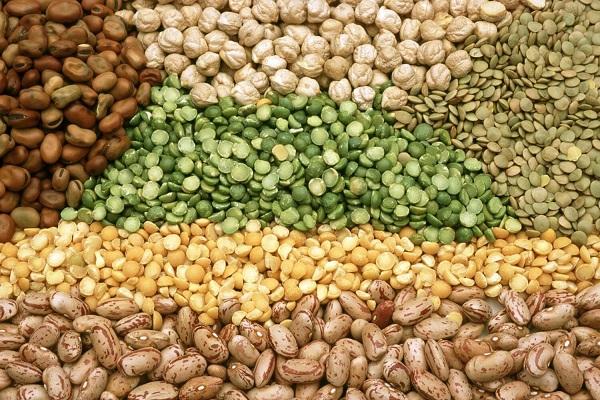
Roots
Root vegetables familiar to poultry also do not interfere with the diet. The best option would be potatoes. It is essential for the formation of eggshells due to its high starch content.
Important! It is recommended that you organize your bird potato stocks in advance. It is enough to put aside small roots that are not suitable for cooking.
In addition to potatoes, the following root crops should be included in the diet:
- Carrot.It can be grown in beds designed specifically for growing crops for animal feed. You can give preference to feed varieties. They are inferior in taste, but contain all the necessary substances.
- Beet. Such a crop is needed to feed birds, however, storing fodder beets is quite problematic, since they dry quickly. The use of a covering in the form of burlap will help to correct the situation.
Adding several types of root vegetables will help improve egg production.
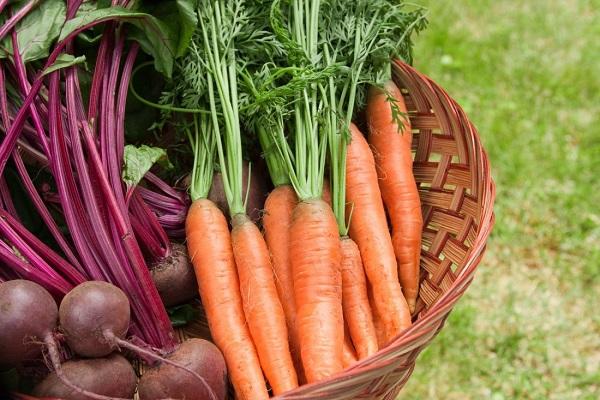
Green feed
To obtain vitamin and fiber with food, domestic chickens should use greens. Recommended plants for poultry:
- dandelion;
- alfalfa;
- quinoa;
- clover;
- nettle.
During the frost period, these components are added dry - as an additive to nutritious mash.

Coniferous components
Don't forget about pine flour. It is added to feed mixtures. The needles are necessary to keep the bird in good shape during the period of weakened immunity. Providing feed with the necessary vitamins will increase the intensity of reproductive processes.
Animal food
For feeding poultry in winter, it is recommended to introduce animal products into the diet. They are rich in healthy amino acids needed for egg formation. Fermented milk products most accessible to poultry farmers:
- cottage cheese;
- kefir;
- curdled milk.
You can also add meat and bone meal, fish and meat waste to the feed.
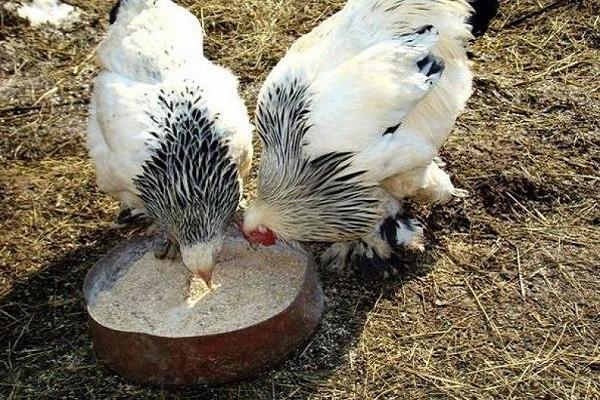
Horticultural waste
Chickens feed well on garden waste. These can be rotten pears, apples, plums, which were placed in the cellar for long-term storage. They are usually added to the mash. Despite some defects, the fruit does not lose vitamins and amino acids.
Mineral complexes
To replenish the mineral balance in the body of the bird, feed additives are needed. Optimal: chalk, crushed shell rock, ash and eggshells. They are all essential for the reproductive function of the chicken. Table salt is also used as an additive. It contains a large amount of sodium and chlorine.
Water
No matter how high-quality the feed is, poultry nutrition is impossible without water. Drinking bowls should always have enough of it. Chickens independently regulate the amount of fluid they consume. They drink after every meal. In some cases, instead of water, snow is used in winter, which melts and becomes pure water.
Important! The water should be changed regularly with clean water.
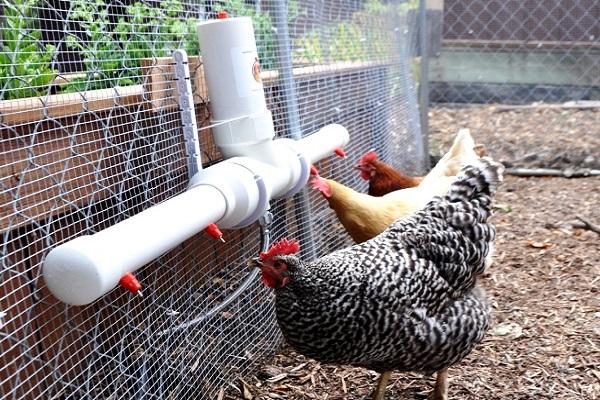
Healthy Supplements
For complete care, it is necessary to introduce special vitamin supplements into the diet. These can be ready-made mixes offered by stores. They do not contain harmful growth hormones or preservatives, but they do contain amino acids, vitamins and minerals.
The following foods can act as vitamin supplements:
- dried kelp (seaweed). They saturate the yolk and strengthen the eggshell;
- fish oil - a storehouse of fatty acids necessary for birds;
- apple cider vinegar, to improve the quality of plumage and increase the overall tone of the bird;
- probiotics to boost immune defenses;
- berries (rosehip, hawthorn, red rowan) as a source of vitamins.
It is advisable to add baker's yeast to the food. They can help you gain weight and improve productivity.
These additives are given to the birds in crushed form or mixed with dry food.
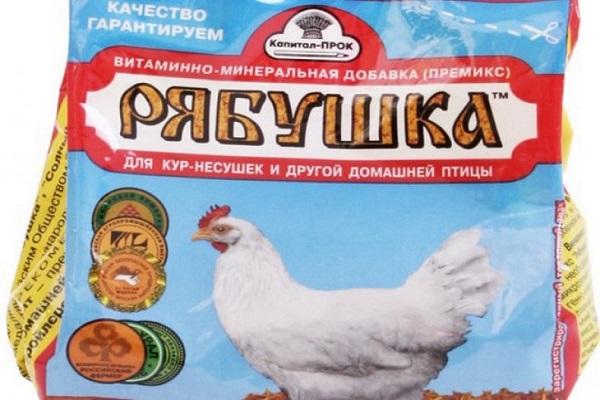
Prohibited foods for chickens
There is a certain list of products that are harmful to laying hens. It includes:
- sausage products that can cause disturbances in the cardiovascular system of poultry;
- milk - to avoid the development of dysbiosis;
- cheese. Its high fat content causes obesity, and spices and preservatives negatively affect the health of chickens;
- chocolate and coffee;
- alcohol, since birds cannot digest alcohol;
- compote - due to the destructive sugar content.
- oil that is also not digested by the chicken.
All these products are detrimental not only to the reproductive function of poultry, but also to its entire body.
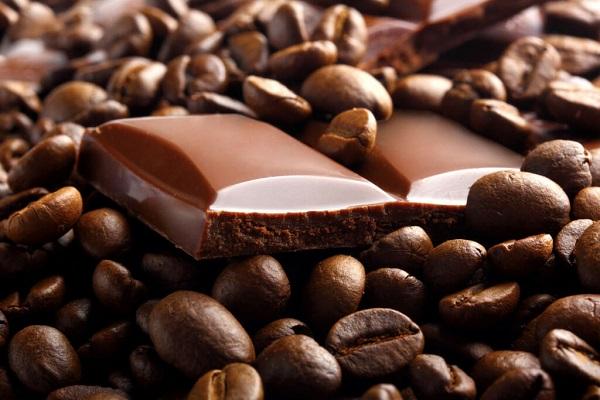
How to prepare food for layers in winter?
To save money, you can prepare food at home. First you need to choose the consistency of the future mixture. It can be dry food or mushy. The basis of any of them is the grain. The desired foods are added to it: dry grass, vegetables and fruits, as well as bone meal, dairy products and vitamin supplements.
It is important to achieve the necessary consistency that will not interfere with the process of ingestion and digestion of the bird. To do this, use a crusher, grater or pruner. If necessary, the consistency of the feed can be alternated. This will provide a varied diet for poultry.

Using electric units for preparing feed
To prepare food of the required quality, the food must be properly chopped. It is difficult to do this manually, therefore, with a large number of poultry, it is worth considering purchasing special equipment. The electric shredder is able to crush not only root crops, but also grain and legumes. The best is a unit with a two-phase motor. It is more powerful and will provide food for all livestock.
The steamer will become an irreplaceable assistant in the household. This is a device designed for the preparation of feed from food waste, herbs and juicy feed. With its help, you can prepare healthy and high-calorie food in the shortest possible time.
What to feed to increase egg production in winter
In order for chickens to rush in the winter, it is necessary to replenish the diet with those products that are involved in the formation of eggs. It is not recommended to switch only to grain feed. It does not satisfy the full need for a varied diet of layers, which is why their productivity decreases. The content of vitamins, minerals and amino acids should be approximately the same so that there is no deficiency of one of the elements.
Competently organized feeding of laying hens in winter will ensure high egg production and help poultry maintain health at low temperatures. Do not forget about the chicken coop device. If it is insulated enough, then the volume of food does not have to be increased..

